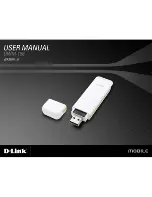
Fabric OS 6.2 administrator guide 523
A
Configuring the PID format
PIDs and PID binding overview
Port identifiers (called
PIDs
) are used by the routing and zoning services in Fibre Channel fabrics to identify
ports in the network. All devices in a fabric must use the same PID format, so when you add new
equipment to the SAN, you might need to change the PID format on legacy equipment.
NOTE:
Any switch running Fabric OS 6.1.0 or later uses the Core PID format and cannot be modified.
The PID is a 24-bit address built from the following three 8-bit fields:
•
domain
•
area_ID
•
AL_PA
Many scenarios cause a device to receive a new PID; for example, unplugging the device from one port
and plugging it into a different port as part of fabric maintenance, or changing the domain ID of a switch,
which might be necessary when merging fabrics, or changing compatibility mode settings.
Some device drivers use the PID to map logical disk drives to physical Fibre Channel counterparts. Most
drivers can either change PID mappings dynamically, also called
dynamic PID binding
, or use the WWN
of the Fibre Channel disk for mapping, also called
WWN binding
.
Some older device drivers behave as if a PID uniquely identifies a device; they use
static PID binding
. These
device drivers should be updated, if possible, to use WWN or dynamic PID binding instead, because
static PID binding creates problems in many routine maintenance scenarios. Fortunately, very few device
drivers still behave this way. Many current device drivers enable you to select static PID binding as well as
WWN binding. You should select only static binding if there is a compelling reason, and only after you
have evaluated the impact of doing so.
Fixed addressing mode
This is the default addressing mode used in all the platforms, except for the HP StorageWorks DC SAN
Backbone Director and HP StorageWorks DC04 SAN Director Switch, that do not have Virtual Fabrics
enabled. In this mode, each port has a fixed address assigned by the system based on the port number
and does not change unless the user chooses to swap the address using the
portSwap
command.
10-bit addressing mode
This is the default mode for all the Logical Switches created in the HP StorageWorks DC SAN Backbone
Director and HP StorageWorks DC04 SAN Director Switch enterprise-class platforms. This addressing
scheme is flexible to support a large number of F_Ports. In the regular 10 bit addressing mode, the
portAddress
--
auto
command supports addresses from 0x0000 – 0x8F00.
256-area addressing mode
This configurable addressing mode is available only in a Logical Switch on the HP StorageWorks DC SAN
Backbone Director and HP StorageWorks DC04 SAN Director Switch platforms. In this mode, only 256
ports are supported and each port receives a unique 8-bit area address. This mode can be used in FICON
environments, which have strict requirements for 8-bit area FC addresses.
There are two types of area assignment modes in the 256-area addressing mode: zero-based and
port-based. Zero-based mode which assigns areas as ports are added to the partition, beginning at area
0x00. This mode allows FICON customers to make use of the upper ports of a 48-port blade; but this
mode may not be compatible with
domain,index
zoning in InteropMode 2, because M-EOS switches are
not capable of handling indexes greater than 255. In the 256-area mode, both zero-based and port-based
modes, you can assign from the entire range of 0x0000 – 0xff00 for the PID.
Summary of Contents for A7533A - Brocade 4Gb SAN Switch Base
Page 1: ...HP StorageWorks Fabric OS 6 2 administrator guide Part number 5697 0016 Edition May 2009 ...
Page 24: ...24 ...
Page 99: ...Fabric OS 6 2 administrator guide 99 ...
Page 100: ...100 Managing user accounts ...
Page 118: ...116 Configuring standard security features ...
Page 164: ...162 Configuring advanced security features ...
Page 234: ...232 Installing and maintaining firmware ...
Page 268: ...266 Administering advanced zoning ...
Page 284: ...282 Configuring Enterprise class platforms ...
Page 292: ...290 Routing traffic ...
Page 294: ...292 Interoperability for merged SANs ...
Page 302: ...300 Configuring the Distributed Management Server ...
Page 334: ...332 iSCSI gateway service ...
Page 340: ...338 Administering NPIV ...
Page 407: ...Fabric OS 6 2 administrator guide 405 ...
Page 408: ...406 Using the FC FC routing service ...
Page 438: ...434 Administering extended fabrics ...
Page 460: ...456 Administering ISL trunking ...
Page 516: ...512 FICON fabrics ...
Page 526: ...522 Configuring and monitoring FICON Extension Services ...
Page 540: ...536 Configuring the PID format ...
Page 544: ...540 Understanding legacy password behavior ...
Page 546: ...542 Mixed fabric configurations for non merge SANs ...
Page 550: ...546 Migrating from an MP Router to a 400 MP Router ...
Page 558: ...554 Inband Management ...
Page 572: ...568 ...
















































